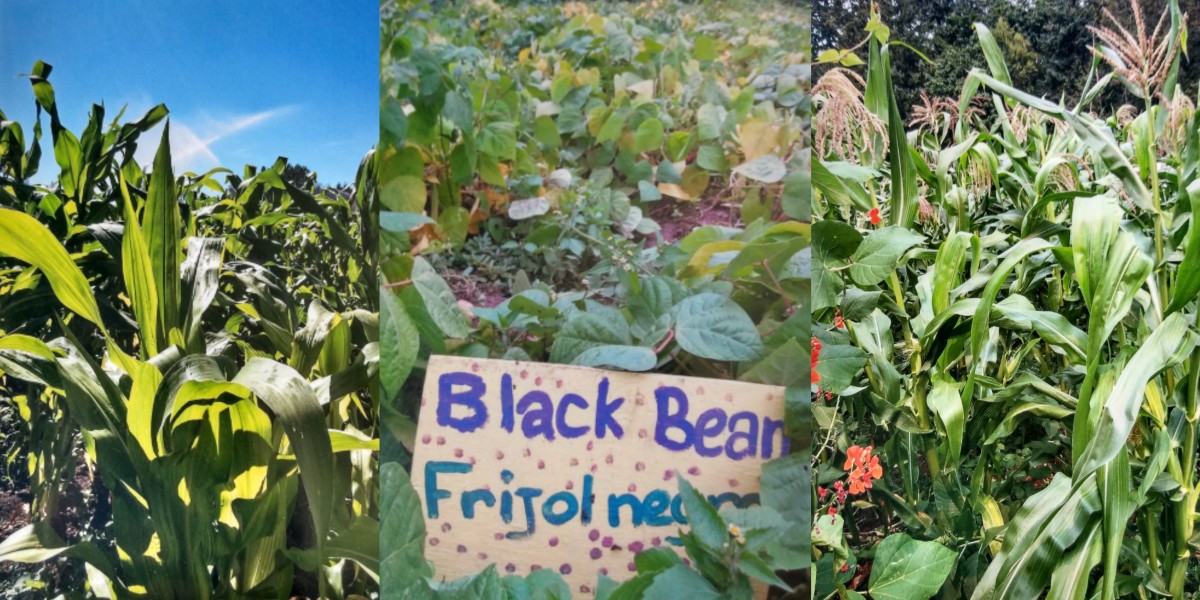Please note: a recording of this webinar is not available. The following provides a recap of what was shared.

In this webinar, hosted in collaboration with our partners at the Public Health Association of BC, Elder Lix Lopez explained the ways of growing squash, beans, and corn, along with his story of coming to Vancouver, and finding ways to continue his Mayan heritage and culture.
The Mayan people’s traditional territories include the southern part of Mexico, Guatemala, Belize and part of Honduras and El Salvador. Elder Lix is a member of the Maya in Exile Garden, located at UBC Farm on the unceded and ancestral territories of the xʷməθkʷəy̓əm (Musqueam) peoples.
Elder Lix started this webinar with the legend of the hidden corn. Describing how the animals, and then the Mayan peoples came to incorporate corn into their diet. Elder Lix also highlighted how all societies found a way to sustain themselves. For the Mayan people, it was through growing the three sisters together, as these plants nourished the people and planet.
In particular benefit to the planet, Elder Lix described how planting corn takes nitrogen out of soil, however, planting beans next to the corn brings essential nutrients back to the soil because beans are nitrogen-fixing plants. He further illustrated the importance of planting squash, stating how his ancestral homelands are very mountainous and there was fear of soil erosion. Planting squash provided a way to decrease soil erosion. These stories highlight the importance of building plant communities that allow plants to thrive, and sustain communities.
After moving from central America to the Pacific Northwest, planting the three sisters on different lands and climate was a challenge at first. The original seeds came from Guatemala, and it took a couple of years for the plants to adapt to the temperate coastal soil. Every year, the Maya in Exile garden save the seeds from the crops and use it for the next year. The garden brings families together, continuing some of the Mayan cultural traditions and helps to supplement their diet. They welcome the growing season with a ceremony to bless and ask Mother Earth to begin the work. When the corn is harvested another ceremony is offered to show gratitude to Mother Earth for all the produce she provided. Some of the produce is sold at the UBC’s Farm market on Saturdays during spring and summer, the rest is shared among the member families and volunteers.
Some advice on how to plant the three sisters if you are located in Pacific Northwest Coast
- Corn: Planting season beings in late April
- Best to plant 3-4 seeds about 5 inches (12 cm) in the ground to allow for strong root system development
- Plant more than one seed per sister as they help provide support for one another
- Beans grow faster so they can be planted later in the season
- Butter squash or zucchini are better adapted species to grow in the Pacific Northwest Coast
- Other crops can be included to grow close to the sisters like amarant and ‘hierba mora’ (Solanum nigrum) which has medicinal properties
- Harvest the sisters in September
Elder Lix also emphasized the importance of getting children in the garden and getting their hands in the soil. He spoke about how this allows children to create connections with the land that they are on, increases their knowledge of how food is produced, and understand the food system in its entirety.
If you wish to learn more about Elder Lix and Maya in Exile Garden click here. The Maya in Exile garden also welcomes visitors and volunteers, for an opportunity to visit the garden post-COVID-19, visit their website.
Farm to Cafeteria Canada and Public Health Association of BC were honoured to host Elder Lix and learn from the vast knowledge he holds. Thank you, Elder Lix, for sharing your knowledge and stories with us.






[…] Farm to Cafeteria Canada has shared a recording and summary from two recent webinars, one exploring Sea to School and one on The Three sisters: history, culture and ways of growing. […]